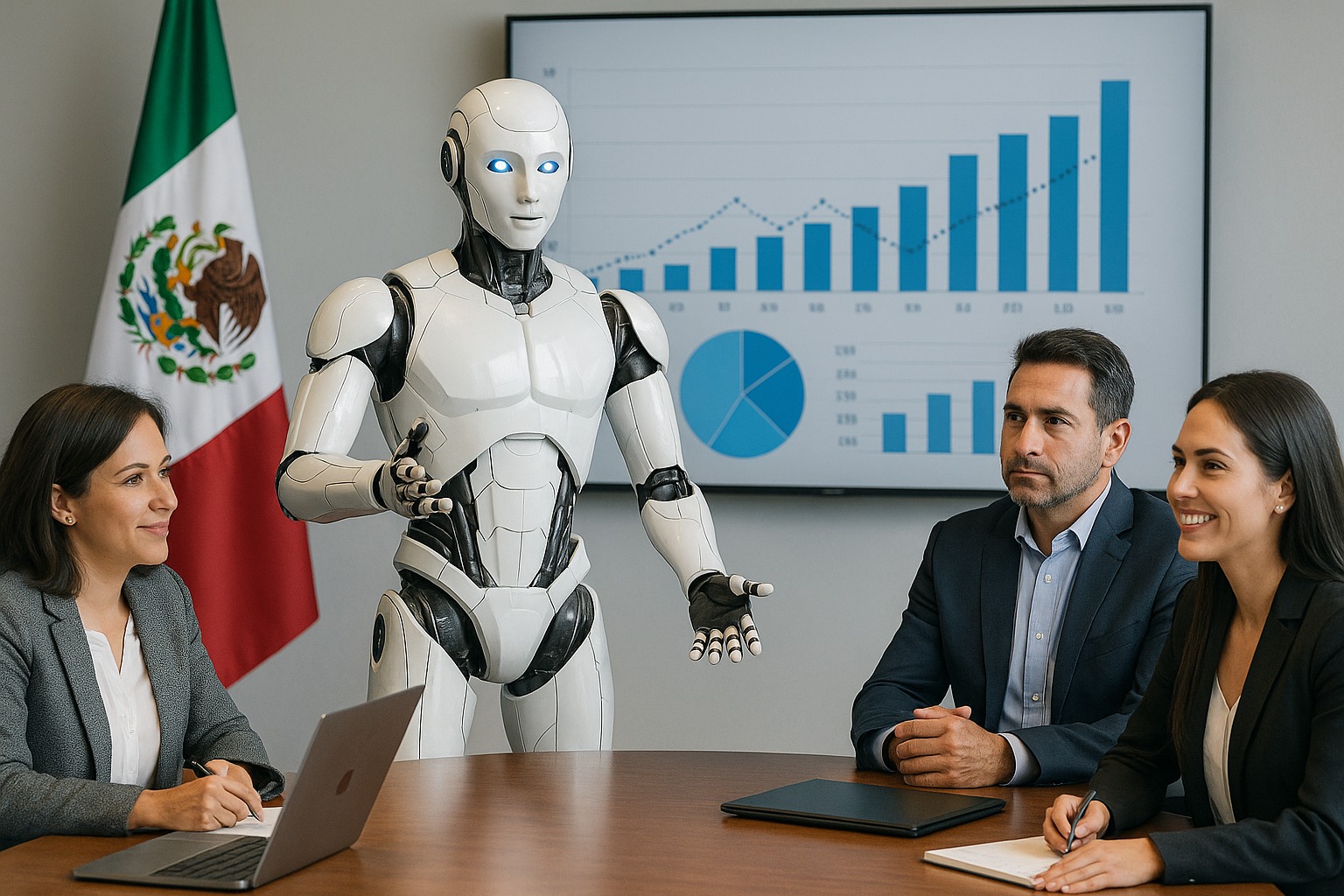Artificial intelligence and robotics are not promises of the future—they are powerful realities that are revolutionizing our lives and environments. Today, they are transforming entire cities, making them more efficient, safer, and—paradoxically—more human.
Smart cities are not a utopia yet to come: they are already here… and they are redefining, in real time, the way we live, work, and connect.
What is a smart city?
A smart city is one that uses technology, data, and artificial intelligence to improve public services, optimize resources, and enhance the quality of life for its residents. But it goes beyond just sensors and cameras—we’re talking about urban infrastructure that “thinks” and responds in real time.
And when we add robotics to the equation, the potential multiplies: repetitive, dangerous, or costly tasks can be automated, freeing people to focus on higher-value activities.
AI and robotics are transforming our cities
1. Traffic and urban mobility
In cities like Singapore, AI systems analyze traffic flow and adjust traffic lights in real time. Additionally, autonomous vehicles are already being tested as public transportation on specific routes, helping to reduce accidents and emissions.
In some airports and metro stations, robots guide passengers, answer questions, and assist people with limited mobility.
2. Smart waste management
San Francisco and several European cities use sensors to monitor the fill levels of trash containers. In addition, autonomous robots are deployed to patrol specific areas, collecting light or hazardous waste—especially in parks and industrial zones.
In South Korea, some residential complexes use robots to collect and automatically sort waste.
3. Energy and urban maintenance
AI systems already predict electricity demand and optimize the use of renewable energy. Additionally, drones equipped with thermal sensors inspect power grids, solar panels, and building rooftops to detect faults, leaks, or overheating—reducing risks and costs.
Ground robots carry out maintenance tasks in pipelines, sewers, and water treatment plants.
4. Public safety
In Dubai, patrol robots roam pedestrian areas, monitoring for unusual situations and alerting the police in real time. Some even allow citizens to file reports directly through their touchscreen.
Surveillance drones are used during large events or in high-risk areas to map potential threats without putting human officers in danger.
5. Public spaces and cleaning
In Japan and Europe, cleaning robots are commonly seen operating in train stations, airports, and shopping centers. These robots do more than just sweep or vacuum—they avoid obstacles, recognize people, and adapt their routes automatically.
In some tech parks across Asia, robotic gardeners are used to water, trim, and monitor the condition of grass and plants.
6. Citizen Assistance and Public Services
In some countries, chatbots and humanoid robots already interact with citizens in government offices, hospitals, and tourist information centers, providing guidance in multiple languages and around-the-clock support.
This doesn’t replace human workers, but it does help reduce service congestion and enables faster, more personalized attention.
Beyond Technology: A Human Vision
Neither AI nor robotics make sense without a people-centered approach. These tools should be used to build cities that are more inclusive, sustainable, and enjoyable—not just more technological.
The challenge is not only technical, but also social: ensuring equitable access, protecting privacy, promoting decent jobs, and making sure no one is left behind in this transition.
México
While there is no specific «National Smart Cities Program» that has operated continuously and centrally across different federal administrations in Mexico, there have been—and continue to be—various national strategies, initiatives, and government programs that promote and lay the foundation for the development of smart cities in the country.
What is the private sector doing?
1. Building Smart Spaces
Real estate developers are investing in residential complexes, condominiums, and industrial parks with integrated technology, including:
· Automated LED lighting
· Facial recognition cameras
· Digital access via code or app
· Real-time service monitoring
This not only improves users’ quality of life, but also reduces operating and maintenance costs.
2. Connectivity as a foundation
Companies like Telmex, AT&T, and Totalplay are investing in fiber optic and 5G networks, enabling the deployment of sensors, IoT devices, and connected platforms. Connectivity is not a luxury—it’s the backbone of a smart city.
3. Smart mobility and Logistics
Companies like Uber, DiDi, Beat, and emerging electric mobility startups are transforming urban transportation without the need for public infrastructure projects.
At the same time, sectors like logistics and industry are adopting technology to optimize routes, reduce emissions, and monitor processes in real time.
4. Startups with urban solutions
Mexican startups are developing platforms to:
· Monitor air quality
· Optimize energy consumption
· Automate irrigation and cleaning systems
· Manage maintenance of buildings and public spaces
Many of these solutions could be scaled citywide if there were a shared vision among the different sectors.
Challenges to overcome
Despite the progress, most private sector projects are isolated and not integrated into a long-term urban plan.
· There is no clear regulation on data use and privacy
· Investment is concentrated in high-income areas
· There is a lack of strategic collaboration with municipal governments
Toward a new collaboration model
The path is clear: the private sector cannot build smart cities alone—but it can lead the change if it:
· Forms strategic partnerships with local governments, sharing technology and data
· Integrates social equity and environmental sustainability criteria
· Promotes open and interoperable standards
· Ensures digital inclusion and social sustainability
Conclusion
Urban intelligence is no longer just an aspiration—it’s now a necessity for competitiveness and well-being. It is the backbone that will enable our country to compete globally and ensure a more dignified, safe, and prosperous environment for all.
In Mexico, its development won’t come by decree, but through the boldness, drive, and vision of the private sector—channeling innovation and efficiency toward society’s real needs.
The challenge lies in scaling these projects until urban intelligence becomes a right: inclusive, equitable, and sustainable—not a privilege limited to the wealthiest areas.
To achieve this, governments, businesses, and civil society must work together—replacing fragmentation with synergy, vision, leadership, political will, and shared commitment.
As leaders, entrepreneurs, urban planners, or citizens, we have both the opportunity—and the responsibility—to be active players in this transformation.


